Making a Supertough Flame-Retardant Polylactide Composite through Reactive Blending with Ethylene-Acrylic Ester-Glycidyl Methacrylate Terpolymer and Addition of Aluminum Hypophosphite
- PMID: 31457549
- PMCID: PMC6641001
- DOI: 10.1021/acsomega.7b00162
Making a Supertough Flame-Retardant Polylactide Composite through Reactive Blending with Ethylene-Acrylic Ester-Glycidyl Methacrylate Terpolymer and Addition of Aluminum Hypophosphite
Abstract
Biocompatible and biodegradable polylactide (PLA) composites with supertough mechanical property and sufficient flame retardancy were fabricated by employing a facile approach involving reactive blending of PLA and ethylene-acrylic ester-glycidyl methacrylate terpolymer (EGMA), with the addition of aluminum hypophosphite (AHP) as an effective flame retardant. In consideration of the balance between mechanical property and flame retardancy, the optimal formula was taking a PLA/EGMA 80/20 blend (supertough STPLA) as the matrix and adding 20 wt % of AHP (relative to the mass of STPLA) as the flame retardant, coded as STPLA/20AHP. The mechanical property test showed that for STPLA/20AHP the elongation at break was increased by about 22 times and the notched Izod impact strength was enhanced by approximately 11 times as compared to those for neat PLA. The flame-retardant property test showed that for STPLA/20AHP the limiting oxygen index value reached 26.6% and the UL-94 V0 rating test was passed. Thermogravimetric analysis, microscale combustion calorimetry, and cone calorimeter were further applied to reveal the thermal stability and combustion behaviors of STPLA/xAHP, respectively, where x indicated the mass content of AHP in percentage. The phase separation morphology, dispersion of AHP particles in STPLA matrix, and fracture surfaces and char residues after flame burning were examined by phase contrast optical microscopy and scanning electron microscopy, respectively, which helped comprehend the results obtained from the mechanical property and flame retardancy tests. The supertough STPLA/xAHP, with sufficient flame retardancy as prepared in this work, could have a potential for engineering applications.
Conflict of interest statement
The authors declare no competing financial interest.
Figures

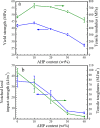
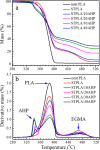
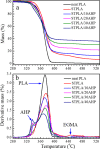

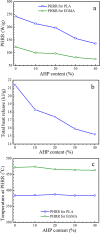


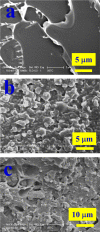
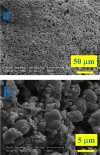
Similar articles
-
Flame Retardancy and Toughness of Poly(Lactic Acid)/GNR/SiAHP Composites.Polymers (Basel). 2019 Jul 3;11(7):1129. doi: 10.3390/polym11071129. Polymers (Basel). 2019. PMID: 31277216 Free PMC article.
-
Development of Biodegradable Flame-Retardant Bamboo Charcoal Composites, Part I: Thermal and Elemental Analyses.Polymers (Basel). 2020 Sep 27;12(10):2217. doi: 10.3390/polym12102217. Polymers (Basel). 2020. PMID: 32992551 Free PMC article.
-
Development of Biodegradable Flame-Retardant Bamboo Charcoal Composites, Part II: Thermal Degradation, Gas Phase, and Elemental Analyses.Polymers (Basel). 2020 Sep 28;12(10):2238. doi: 10.3390/polym12102238. Polymers (Basel). 2020. PMID: 32998464 Free PMC article.
-
Effect of Thermal Conductive Fillers on the Flame Retardancy, Thermal Conductivity, and Thermal Behavior of Flame-Retardant and Thermal Conductive Polyamide 6.Materials (Basel). 2019 Dec 9;12(24):4114. doi: 10.3390/ma12244114. Materials (Basel). 2019. PMID: 31818046 Free PMC article.
-
Flame-Retardant Thermoplastic Polyether Ester/Aluminum Butylmethylphosphinate/Phenolphthalein Composites with Enhanced Mechanical Properties and Antidripping.Polymers (Basel). 2024 Feb 18;16(4):552. doi: 10.3390/polym16040552. Polymers (Basel). 2024. PMID: 38399930 Free PMC article.
Cited by
-
Core-Shell Structured Polyamide 66 Nanofibers with Enhanced Flame Retardancy.ACS Omega. 2017 Jun 15;2(6):2665-2671. doi: 10.1021/acsomega.7b00397. eCollection 2017 Jun 30. ACS Omega. 2017. PMID: 31457608 Free PMC article.
-
Thermal Degradation and Fire Properties of Fungal Mycelium and Mycelium - Biomass Composite Materials.Sci Rep. 2018 Dec 4;8(1):17583. doi: 10.1038/s41598-018-36032-9. Sci Rep. 2018. PMID: 30514955 Free PMC article.
-
Scale-Up Fabrication of Biodegradable Poly(butylene adipate-co-terephthalate)/Organophilic-Clay Nanocomposite Films for Potential Packaging Applications.ACS Omega. 2018 Jan 30;3(1):1187-1196. doi: 10.1021/acsomega.7b02062. eCollection 2018 Jan 31. ACS Omega. 2018. PMID: 31457960 Free PMC article.
-
Advances in Flame Retardant Poly(Lactic Acid).Polymers (Basel). 2018 Aug 6;10(8):876. doi: 10.3390/polym10080876. Polymers (Basel). 2018. PMID: 30960801 Free PMC article. Review.
References
-
- Auras R. A.; Lim L. T.; Selke S. E.; Tsuji H.. Poly (Lactic Acid): Synthesis, Structures, Properties, Processing, and Applications; John Wiley & Sons, 2011; pp 457–467.
-
- Sin L. T.; Rahmat A. R.; Rahman W. A.. Poly (Lactic Acid): PLA Biopolymer Technology and Applications; William Andrew, 2012; pp 33–56.
LinkOut - more resources
Full Text Sources

